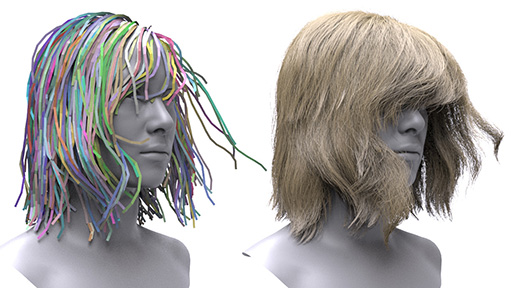Sag-Free Hair Simulation
Lagrangian/Eulerian hybrid strand-based hair simulation techniques have quickly become a popular approach in VFX and real-time graphics applications. With Lagrangian hair dynamics, the inter-hair contacts are resolved in the Eulerian grid using the continuum method, i.e., the MPM scheme with the granular Drucker-Prager rheology, to avoid expensive collision detection and handling. This fuzzy collision handling makes the authoring process significantly easier. However, although current hair grooming tools provide a wide range of strand-based modeling tools for this simulation approach, the crucial sag-free initialization functionality remains often ignored. Thus, when the simulation starts, gravity would cause any artistic hairstyle to sag and deform into unintended and undesirable shapes.
This paper proposes a novel four-stage sag-free initialization framework to solve stable quasistatic configurations for hybrid strand-based hair dynamic systems. These four stages are split into two global-local pairs. The first one ensures static equilibrium at every Eulerian grid node with additional inequality constraints to prevent stress from exiting the yielding surface. We then derive several associated closed-form solutions in the local stage to compute segment rest lengths, orientations, and particle deformation gradients in parallel. The second global-local step solves along each hair strand to ensure all the bend and twist constraints produce zero net torque on every hair segment, followed by a local step to adjust the rest Darboux vectors to a unit quaternion. We also introduce an essential modification for the Darboux vector to eliminate the ambiguity of the Cosserat rod rest pose in both initialization and simulation. We evaluate our method on a wide range of hairstyles, and our approach can only take a few seconds to minutes to get the rest quasistatic configurations for hundreds of hair strands. Our results show that our method successfully prevents sagging and has minimal impact on the hair motion during simulation.
Paper Video

